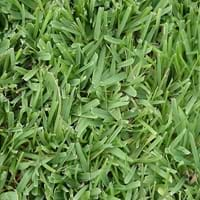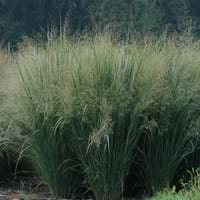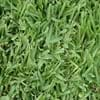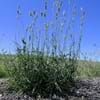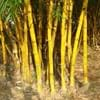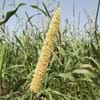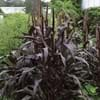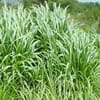What is
Life Span
Perennial
Perennial
Type
Grass
Grass
Origin
World/Pandemic
North America, Canada, Mexico
Types
Not Available
Panicum abscissum, Panicum acostia, Panicum amarum
Number of Varieties
Not Available
38
99+
Habitat
Subtropical climates, Tropical regions
Prairies
USDA Hardiness Zone
8-10
4-9
AHS Heat Zone
Not Available
9 - 1
Sunset Zone
H2, 17, 24
1a, 1b, 2a, 2b, 3a, 3b, 4, 5, 6, 7, 8, 9, 10, 11, 14, 15, 16, 17, 18, 19, 20, 21, 22, 23
Habit
Mat-forming
Upright/Erect
Information
Plant Size
Minimum Height
2.50 cm
99+
150.00 cm
99+
Minimum Width
Not Available
90.00 cm
99+
Plant Color
Flower Color
Green, White
Green
Flower Color Modifier
Bicolor
Bicolor
Fruit Color
Non Fruiting Plant
Not Available
Leaf Color in Spring
Green
Green, Light Green, Blue Green, Gray Green
Leaf Color in Summer
Light Green
Light Green
Leaf Color in Fall
Green
Red, Green, Orange, Blue Green, Gray Green, Bronze
Leaf Color in Winter
Green
Tan, Sandy Brown
Shape
Leaf Shape
Lance shaped
Grass like
Thorns
No
No
Season
Plant Season
Spring, Summer, Fall, Winter
Spring, Summer, Fall, Winter
Growing Conditions
Sunlight
Full Sun, Partial Sun
Full Sun, Partial Sun
Growth Rate
Medium
Fast
Type of Soil
Clay, Loam, Sand
Clay, Loam, Sand
The pH of Soil
Neutral, Alkaline
Acidic, Neutral, Alkaline
Soil Drainage
Average
Average
Bloom Time
Spring, Late Spring, Early Summer, Summer, Late Summer
Early Summer, Summer, Late Summer
Repeat Bloomer
Yes
No
Tolerances
Pollution, Salt, Soil Compaction
Pollution, Soil Compaction
Care
Where to Plant?
Ground
Ground
How to Plant?
Sprigging or Stolonizing
Divison, Root Division
Plant Maintenance
Medium
Medium
Watering Plants
Watering Requirements
Needs more water during establishment
Average Water Needs, Do Not over Water, Requires regular watering
In Summer
Lots of watering
Lots of watering
In Spring
Moderate
Moderate
In Winter
Average Water
Average Water
Soil
Soil pH
Neutral, Alkaline
Acidic, Neutral, Alkaline
Soil Type
Clay, Loam, Sand
Clay, Loam, Sand
Soil Drainage Capacity
Average
Average
Sun Exposure
Full Sun, Partial Sun
Full Sun, Partial Sun
Pruning
Remove damaged leaves, Remove dead branches, Remove dead leaves
Prune in spring, Remove dead or diseased plant parts, Remove deadheads
Fertilizers
organic fertlizers
Nitrogen
Pests and Diseases
Dollar spot, Leaf spot
Red blotch
Plant Tolerance
Drought
Pollution, Soil Compaction
Facts
Flowers
Insignificant
Yes
Flower Petal Number
Single
Single
Fruits
Showy Fruit
No
Yes
Edible Fruit
No
No
Fragrance
Fragrant Flower
No
No
Fragrant Fruit
No
No
Fragrant Leaf
No
No
Fragrant Bark/Stem
No
No
Showy Foliage
No
Yes
Showy Bark
No
No
Foliage Texture
Fine
Fine
Foliage Sheen
Matte
Matte
Evergreen
No
No
Invasive
Sometimes
No
Self-Sowing
No
Yes
Attracts
Billbugs, Crickets, Cutworms
Birds, Wildlife
Allergy
Not Available
Not Available
Benefits
Uses
Aesthetic Uses
Ground Cover
Showy Purposes
Beauty Benefits
Not Available
Not Available
Edible Uses
No
Insignificant
Environmental Uses
Erosion control
Air purification, Provides ground cover, soil erosion prevension on hill slopes
Plant Benefits
Medicinal Uses
No Medicinal Use
Not Available
Part of Plant Used
Not Available
Leaves
Other Uses
Used as a golf course turf, Used to feed livestock
Cattle Fodder, Used as Biofuel
Used As Indoor Plant
No
No
Used As Outdoor Plant
Yes
Yes
Garden Design
Lawns and Turf
Container, Feature Plant, Foundation, Mixed Border
Scientific Name
Botanical Name
PASPALUM vaginatum
PANICUM virgatum
Common Name
Biscuit Grass, Seashore Paspalum
Switchgrass
In Hindi
Seashore Paspalum
Switchgrass
In German
Seashore Paspalum
Switchgrass
In French
Seashore Paspalum
switchgrass
In Spanish
Paspalum
switchgrass
In Greek
Αιγιαλός Paspalum
switchgrass
In Portuguese
seashore Paspalum
switchgrass
In Polish
Nad morzem Paspalum
switchgrass
In Latin
Paspalum maris
switchgrass
Classification
Kingdom
Plantae
Plantae
Phylum
Magnoliophyta
Magnoliophyta
Class
Lilopsida
Liliopsida
Order
Cyperales
Cyperales
Family
Poaceae
Poaceae
Genus
Paspalum
Panicum
Clade
Angiosperms, Commelinids, Monocots
Angiosperms, Commelinids, Monocots
Tribe
Paniceae
Paniceae
Subfamily
Panicoideae
Panicoideae
Number of Species
Not Available
450
35
|
||
|
||
|
